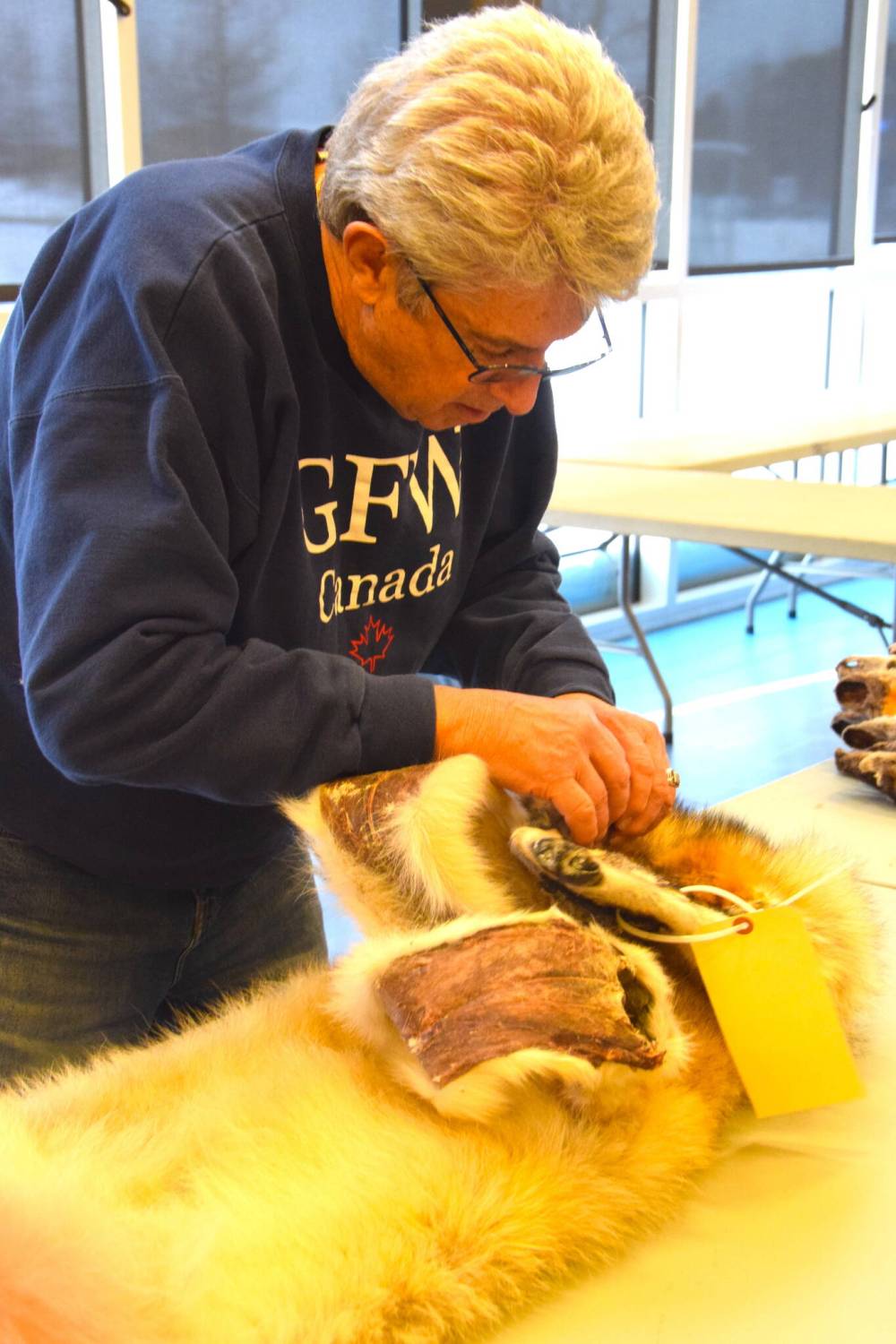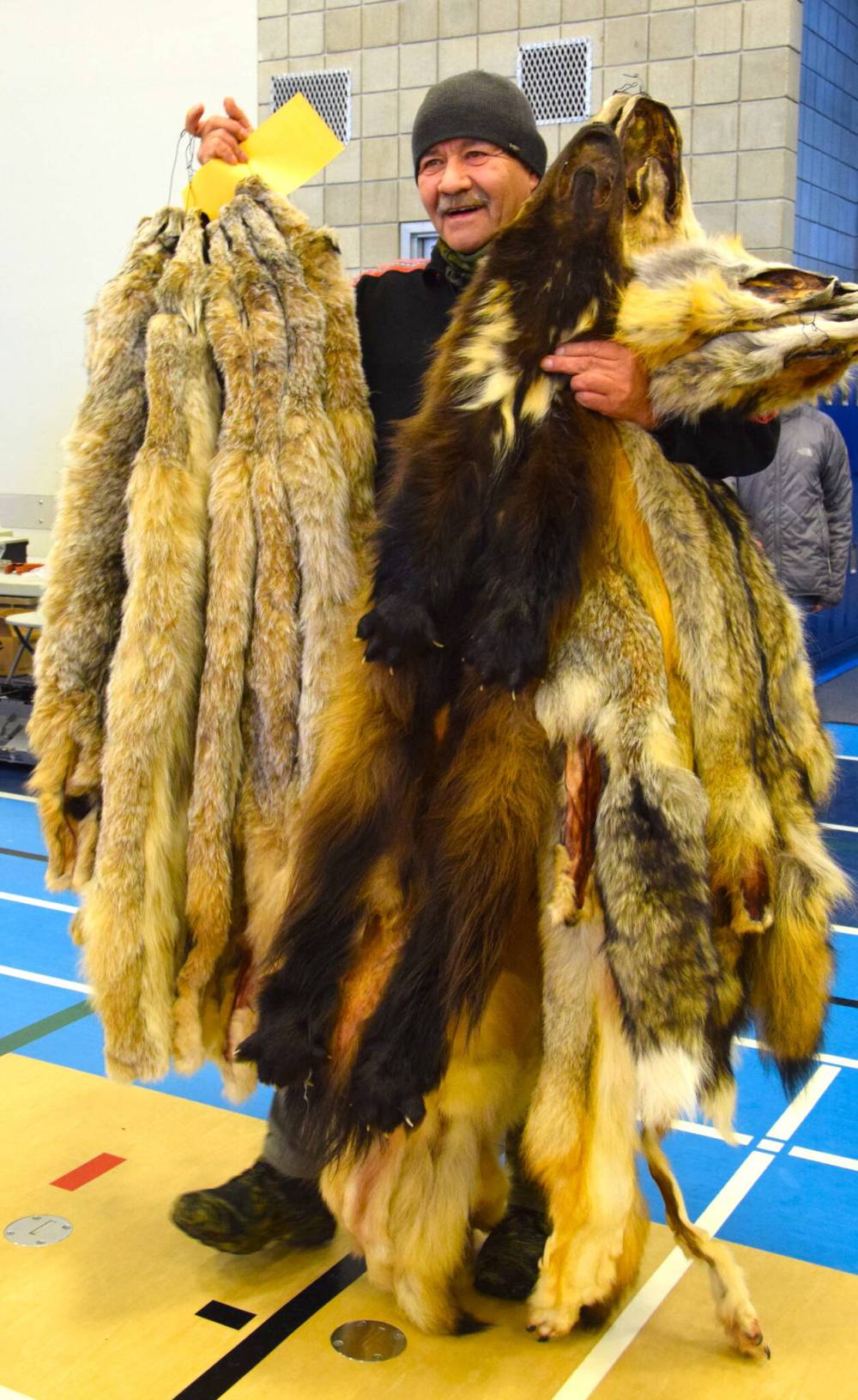Tables of tradition
December Fur Tables brings families, trappers together
Advertisement
Read this article for free:
or
Already have an account? Log in here »
To continue reading, please subscribe:
Monthly Digital Subscription
$0 for the first 4 weeks*
- Enjoy unlimited reading on winnipegfreepress.com
- Read the E-Edition, our digital replica newspaper
- Access News Break, our award-winning app
- Play interactive puzzles
*No charge for 4 weeks then price increases to the regular rate of $19.95 plus GST every four weeks. Offer available to new and qualified returning subscribers only. Cancel any time.
Monthly Digital Subscription
$4.99/week*
- Enjoy unlimited reading on winnipegfreepress.com
- Read the E-Edition, our digital replica newspaper
- Access News Break, our award-winning app
- Play interactive puzzles
*Billed as $19.95 plus GST every four weeks. Cancel any time.
To continue reading, please subscribe:
Add Free Press access to your Brandon Sun subscription for only an additional
$1 for the first 4 weeks*
*Your next subscription payment will increase by $1.00 and you will be charged $16.99 plus GST for four weeks. After four weeks, your payment will increase to $23.99 plus GST every four weeks.
Read unlimited articles for free today:
or
Already have an account? Log in here »
Hey there, time traveller!
This article was published 31/12/2022 (1097 days ago), so information in it may no longer be current.
Fourteen year-old Carlos Lavallee Jr. reaches into a roomy bag and begins to haul out silky brown marten pelts, stacking them on the tables in front of prospective buyers. He’s worked hard since the first snow fell in Easterville, setting traps and preparing pelts. And today, at the December Fur Tables in Thompson, he hopes to be amply rewarded.
For nearly four decades, the annual event, hosted by the Manitoba Trappers Association, is a place to sell some early season furs. More than that, it’s become a time for people who live in the north — often isolated by winter roads and bad weather — to visit with friends and family.
Shel Zolkewich / Winnipeg Free Press The Lavallee family from Easterville arrives at the fur tables ready to make some deals. Pictured are grandma Donna, Kraven, Carlos Jr. and grandpa Wayne Sr.
At the registration table inside the sunlit Thompson Regional Community Centre, each trapper is assigned a number and given a slip that inventories his or her fur lot. One by one, trappers present their collection to each of the potential buyers, lined up at tables around the perimeter of the room, and is offered a price. Sometimes trappers choose to consign their furs, to be sold at big auctions later in the year. But most of the time, it’s a cash transaction, paid out on the spot. It’s up to the trapper to make the best deal.
But before any deals are made, there’s an opening ceremony, one that mostly gives thanks to the land for supplying the bounty. Elder Phillip Bighety, 81, from the remote community of Brochet delivers the opening prayer in Cree.
Since the fur industry was born in Canada more than 350 years ago, fashion and demand have always been the driving factors when it comes to how much trappers receive for their furs. Wild fluctuations are the norm. There’s been years when over $600,000 has changed hands and other years when bad weather for the event sent numbers plummeting to $155,000. This year, the two-day event recorded a payout of $107,000.
Shel Zolkewich / Winnipeg Free Press Clinton Moore of Nelson House arrives ready for the weather with a lot of martens in hand.
Marten remains the dominant species at the tables, usually accounting for about 75 per cent of the pelts. Fox, beaver, muskrat, mink, wolverine, lynx and timberwolf are also up for trade.
Lawrence Saunders, 26, of Gillam, has a big timberwolf among his lot. He’s hoping to get close to $500 for it. But the highest offer comes in much lower, so he chooses not to sell it today. For his 26 martens, he makes a deal for $1350 and that makes him happy.
“Really, trapping is all I want to do,” he says.
It’s a sentiment that’s echoed among all the trappers here. Prices rise and fall but what the pursuit offers remains the same. Traditions run thick here, with experienced trappers often passing on their skills to children and grandchildren. It’s not uncommon to see three generations gathered at the tables.
Shel Zolkewich / Winnipeg Free Press School children run their hands through tanned Arctic fox and lynx pelts at a table hosted by Thompson’s Boreal Discovery Centre.
Education is happening in every corner of the room. School children run their hands through tanned Arctic fox and lynx pelts at a table hosted by Thompson’s Boreal Discovery Centre. Trappers share tips while purchasing new stock at the table laden with traps, snares and fleshing boards. Makers of hats, mitts and moccasins like Sylvia Green point out the difference between fox and raccoon fur to prospective purchasers. Fur buyers including Jason White, Dave Bewick, Dave Vandermeer and Bruno Decesco show onlookers the differences between beaver harvesters in spring versus late fall. Teenagers giggle at the new knowledge that the scent glands of beaver—erroneously but humorously called testicles—fetch big money.
Carlos Lavallee Jr. and his 15 year-old brother Kraven visit with each buyer before settling on payouts of $550 and $520 respectively. Kraven is tucking his away to buy Christmas gifts while Carlos Jr. has his eye on an Xbox. The teenagers tuck their cash away, more eager to regal this writer with more stories of close encounters of the wolf and wolverine variety.
“Trapping is so much fun!” says Carlos Jr.
“Trapping is the best thing to do!” adds Kraven, while grandma Donna Lavallee and grandpa Wayne Lavallee Sr. stand behind the boys.
shel@shelzolkewich.com



